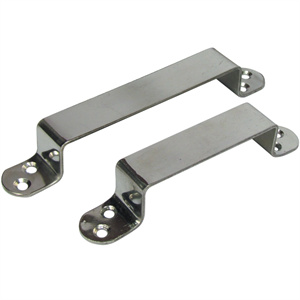Tempering Of Metal Spring Clips
Choosing the correct tempering temperature for Metal Spring Clips is crucial for ensuring the performance and lifespan of the spring clips. The choice of tempering temperature usually depends on the type of material used in the spring clamp, the required mechanical properties, and the specific application environment.
Here are some considerations regarding the tempering temperature of Metal Spring Clips:
Material type: Different metal materials (such as carbon steel, stainless steel, alloy steel, etc.) have different heat treatment characteristics and tempering sensitivity. Therefore, it is necessary to determine the optimal tempering temperature range based on the specific material used.
Mechanical performance requirements: Metal Spring Clips need to have a certain degree of elasticity, toughness, strength, and durability. The choice of tempering temperature will directly affect these mechanical properties. Lower tempering temperatures typically retain higher hardness and elasticity, while higher tempering temperatures can improve material toughness and reduce internal stress.
Application environment: The application environment of Metal Spring Clips is also a factor to consider when selecting the tempering temperature. For example, if the spring clamp needs to work in high or low temperature environments, it is necessary to choose a tempering temperature that can maintain stable performance under these extreme conditions.
Heat treatment process: Tempering is a part of the heat treatment process, usually used in combination with quenching process. The cooling rate and method after quenching will affect the microstructure and properties of Metal Spring Clips, thereby affecting the selection of tempering temperature.
Experiment and testing: In order to determine the optimal tempering temperature, a series of experiments and tests may be required. These tests may include hardness testing, elasticity testing, fatigue testing, etc. to evaluate the performance of Metal Spring Clips at different tempering temperatures.
It should be noted that the selection of tempering temperature is a complex process that requires comprehensive consideration of multiple factors. Therefore, it is recommended to consult a professional heat treatment engineer or material engineer before determining the tempering temperature to ensure the appropriate tempering temperature is selected and the best performance results are obtained.
In addition, the manufacturing process of Metal Spring Clips also needs to pay attention to other factors, such as material selection, spring clip design, manufacturing process, etc., to ensure the quality and performance of the final product.
